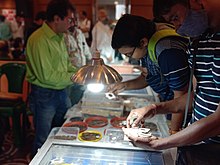
A coin is a small object, usually round and flat, used primarily as a medium of exchange or legal tender. They are standardized in weight, and produced in large quantities at a mint in order to facilitate trade. They are most often issued by a government. Coins often have images, numerals, or text on them. The faces of coins or medals are sometimes called the obverse and the reverse, referring to the front and back sides, respectively. The obverse of a coin is commonly called heads, because it often depicts the head of a prominent person, and the reverse is known as tails.

Numismatics is the study or collection of currency, including coins, tokens, paper money, medals and related objects.

1943 steel cents are U.S. one-cent coins that were struck in steel due to wartime shortages of copper. The Philadelphia, Denver, and San Francisco mints each produced these 1943 Lincoln cents. The unique composition of the coin has led to various nicknames, such as wartime cent, steel war penny, zinc cent and steelie. The 1943 steel cent features the same Victor David Brenner design for the Lincoln cent which had been in use since 1909.

The United States Mint is a bureau of the Department of the Treasury responsible for producing coinage for the United States to conduct its trade and commerce, as well as controlling the movement of bullion. The U.S. Mint is one of two U.S. agencies that produce money in the case of minting coinage; the other is the Bureau of Engraving and Printing, which prints paper currency. The first United States Mint was created in Philadelphia in 1792, and soon joined by other centers, whose coins were identified by their own mint marks. There are currently four active coin-producing mints: Philadelphia, Denver, San Francisco, and West Point.
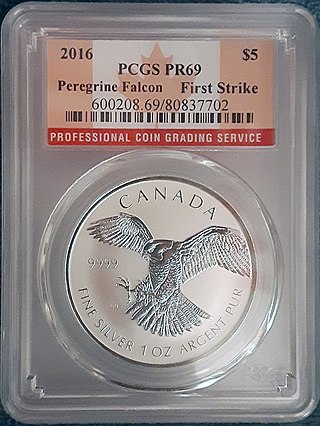
Coin grading is the process of determining the grade or condition of a coin, one of the key factors in determining its collectible value. A coin's grade is generally determined by six criteria: strike, preservation, luster, color, attractiveness, and occasionally the country/state in which it was minted. Several grading systems have been developed. Certification services professionally grade coins for tiered fees.
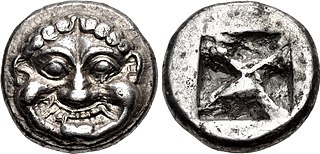
The history of ancient Greek coinage can be divided into four periods: the Archaic, the Classical, the Hellenistic and the Roman. The Archaic period extends from the introduction of coinage to the Greek world during the 7th century BC until the Persian Wars in about 480 BC. The Classical period then began, and lasted until the conquests of Alexander the Great in about 330 BC, which began the Hellenistic period, extending until the Roman absorption of the Greek world in the 1st century BC. The Greek cities continued to produce their own coins for several more centuries under Roman rule. The coins produced during this period are called Roman provincial coins or Greek Imperial Coins.

Professional Coin Grading Service (PCGS) is an American third-party coin grading, authentication, attribution, and encapsulation service founded in 1985. The intent of its seven founding dealers, including the firm's former president David Hall, was to standardize grading. The firm has divisions in Europe and Asia, and is owned by parent company Collectors Universe. PCGS has graded over 42.5 million coins, medals, and tokens valued at over $36 billion.

The 1913 Liberty Head nickel is an American five-cent piece which was produced in extremely limited quantities unauthorized by the United States Mint, making it one of the best-known and most coveted rarities in American numismatics. In 1972, one specimen of the five cent coin became the first coin to sell for over US$100,000; in 1996, another specimen became the first to sell for over US$1 million. A specimen was sold for US$3 million in a 2004 private sale, then resold for US$3.7 million at a public auction in 2010.
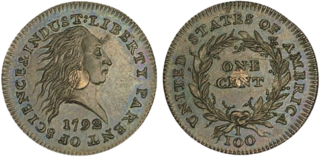
The Silver center cent is an American pattern coin produced by the United States Mint in 1792. As a precursor to the large cent it was one of the first coins of the United States and an early example of a bimetallic coin. Only 12 original examples are known to exist, of which one is located in the National Numismatic Collection at the Smithsonian Institution. Two more specimens exist but contain fabricated plugs added after minting.
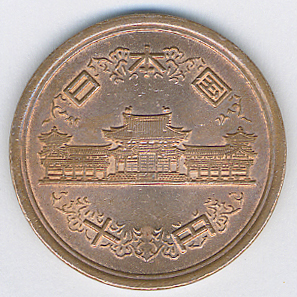
The 10 yen coin is one denomination of the Japanese yen.
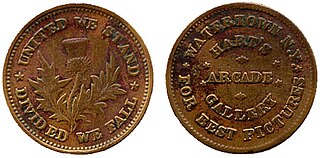
Civil War tokens are token coins that were privately minted and distributed in the United States between 1861 and 1864. They were used mainly in the Northeast and Midwest. The widespread use of the tokens was a result of the scarcity of government-issued cents during the Civil War.

The 1974 aluminum cent was a one-cent coin proposed by the United States Mint in 1973. It was composed of an alloy of aluminum and trace metals, and it was intended to replace the predominantly copper–zinc cent due to the rising costs of coin production in the traditional bronze alloy. Of the 1,571,167 coins struck in anticipation of release, none were released into circulation. To encourage congressional support for the new alloy, the Mint distributed several examples to U.S. Congressmen. When the proposed aluminum cent was rejected, the Mint recalled and destroyed those coins.
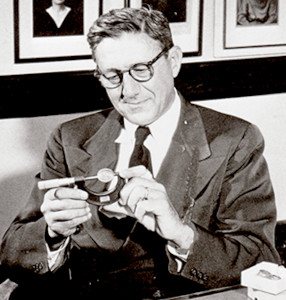
Louis Edward Eliasberg Sr. was an American financier and numismatist. A native of Selma, Alabama, he is best known in the numismatic community for putting together the only complete collection of United States coins ever assembled, consisting of regular issue coins of every date, metal, denomination, and mint mark known to collectors at the time, with attention to coins in the best possible condition. He began the collection during the 1920s and finished the set by purchasing the last gold coin he needed in 1949 and the last silver coin he needed in 1950.
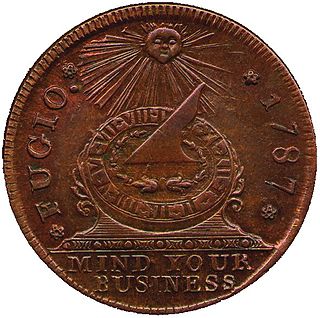
The Fugio cent, also known as the Franklin cent, is the first official circulation coin of the United States. Consisting of 0.36 oz (10 g) of copper and minted dated 1787, by some accounts it was designed by Benjamin Franklin. Its design is very similar to Franklin's 1776 Continental Currency dollar coin that was produced in pattern pieces as potential Continental currency but was never circulated.

The Sheldon Coin Grading Scale is a 70-point coin grading scale used in the numismatic assessment of a coin's quality. The American Numismatic Association based its Official ANA Grading Standards in large part on the Sheldon scale. The scale was created by William Herbert Sheldon.

Michael "Miles" Standish was an American businessman, author, rare coin expert, sports memorabilia expert and philanthropist. He was a co-founder of Collectors Universe and served as vice president of the Numismatic Guaranty Corporation (NGC).

The Saddle Ridge Hoard is the name given to a hoard of 1,427 gold coins unearthed in the western half of the Shasta Cascade region, of Northern California in 2013. The face value of the coins totaled $27,980, but was assessed to be worth $10 million. The hoard contains $27,460 in twenty-dollar coins, $500 in ten-dollar coins, and $20 in five-dollar coins, all dating from 1847 to 1894. The collection is the largest known discovery of buried gold coins that has ever been recovered in the United States.
The 20 yen coin (二十圓硬貨) was a denomination of Japanese yen. These coins were minted in gold, and during their lifespan were the highest denomination of coin that circulated in the country. The first coins were minted in 1870 following the introduction of a decimal currency system. Twenty Yen coins spanned three different Imperial eras before mintage was halted in 1932. Many of these coins were then melted or destroyed as a result of the wars between 1931 and 1945. These coins are now collected by numismatists for academic study, and by those with a hobby.
GreatCollections is an American numismatic online auction house founded in 2010, and based in Irvine, California. The company is an auctioneer of certified rare coins and paper money.

The 1893-S Morgan dollar is a United States dollar coin struck in 1893 at the San Francisco Mint. It is the lowest mintage business strike Morgan dollar in the series. The 1893-S is considered to be a key date in the Morgan dollar series: examples of the coin in both mint state and in circulated condition are valuable.









